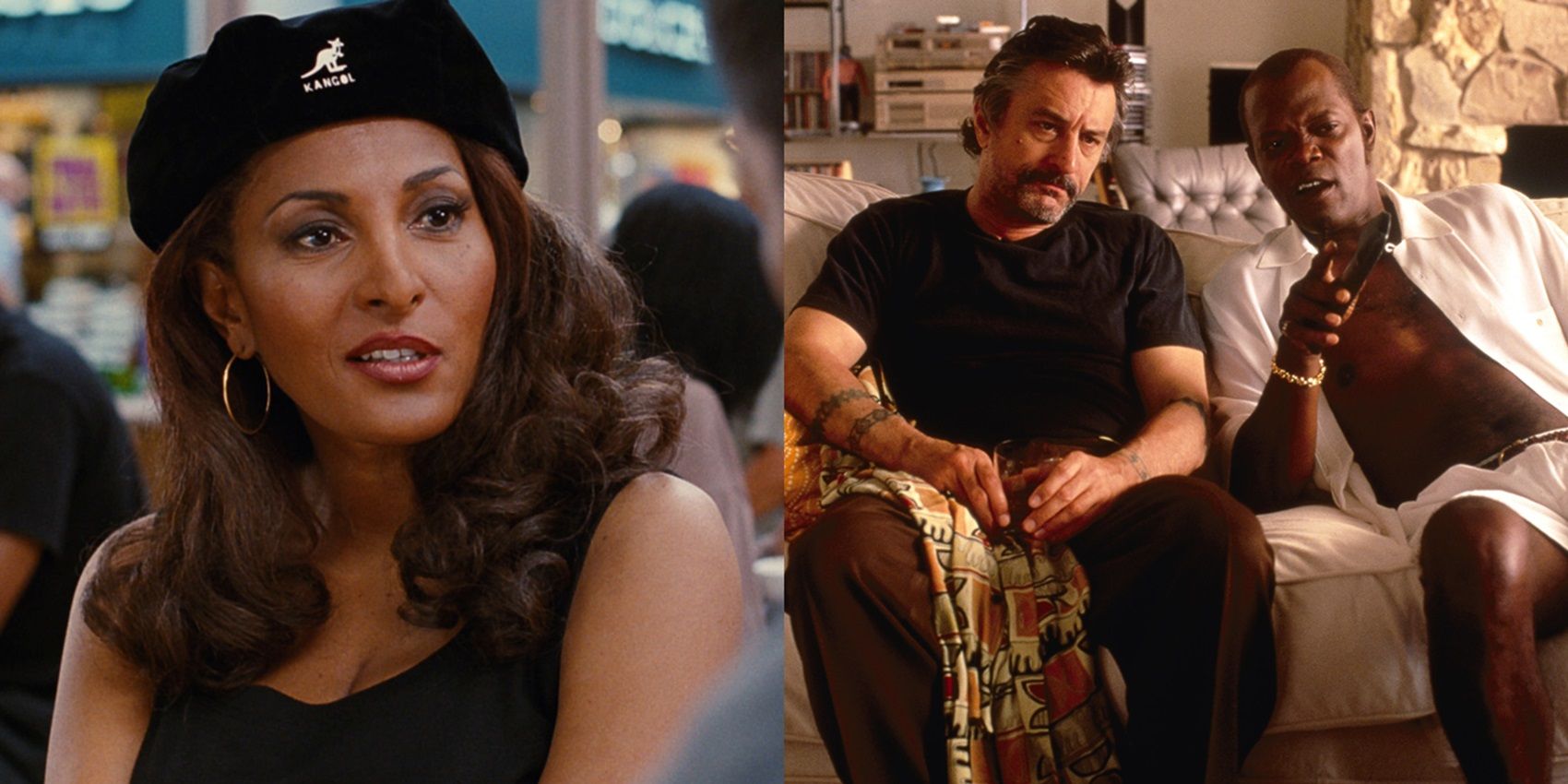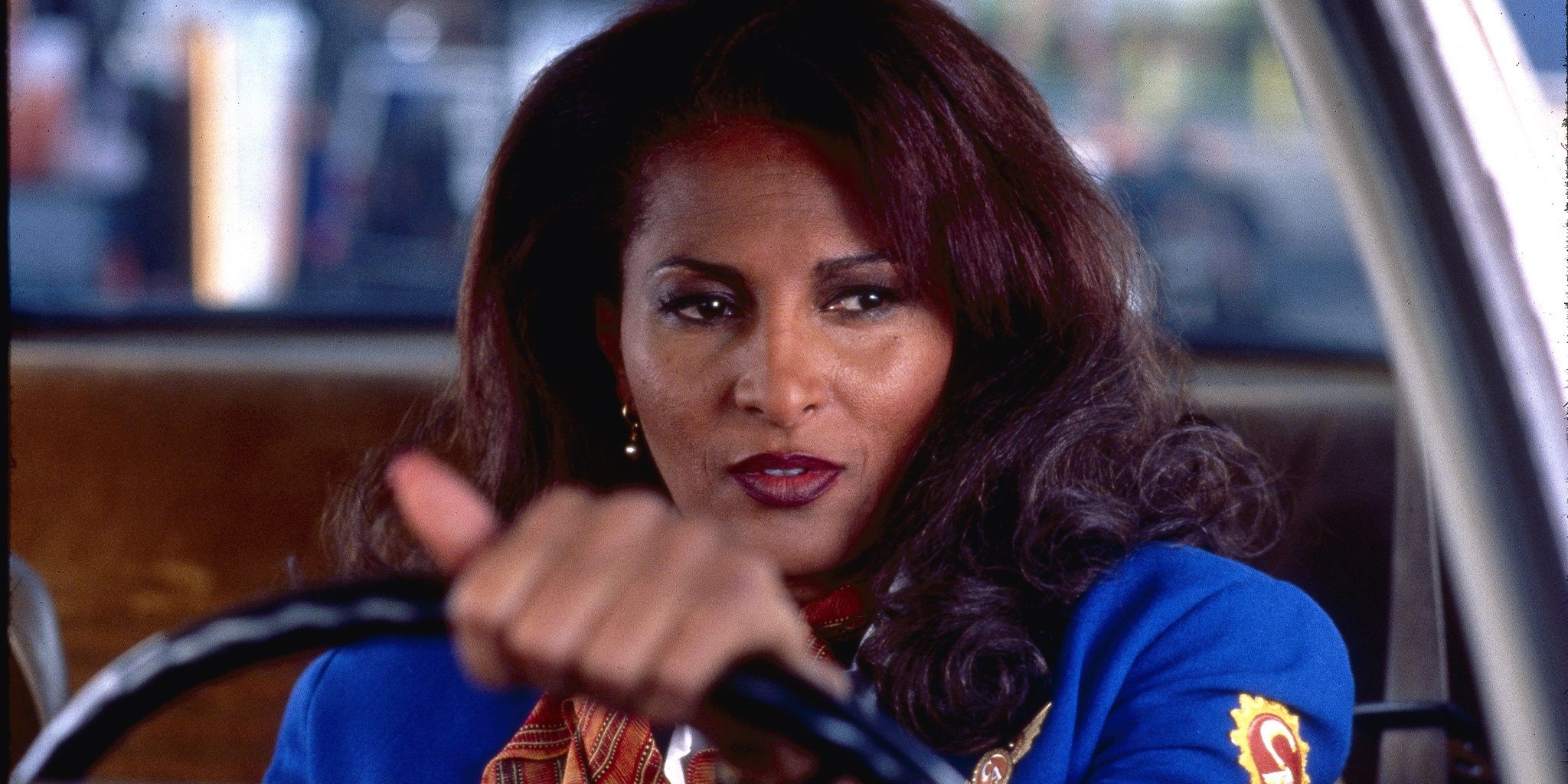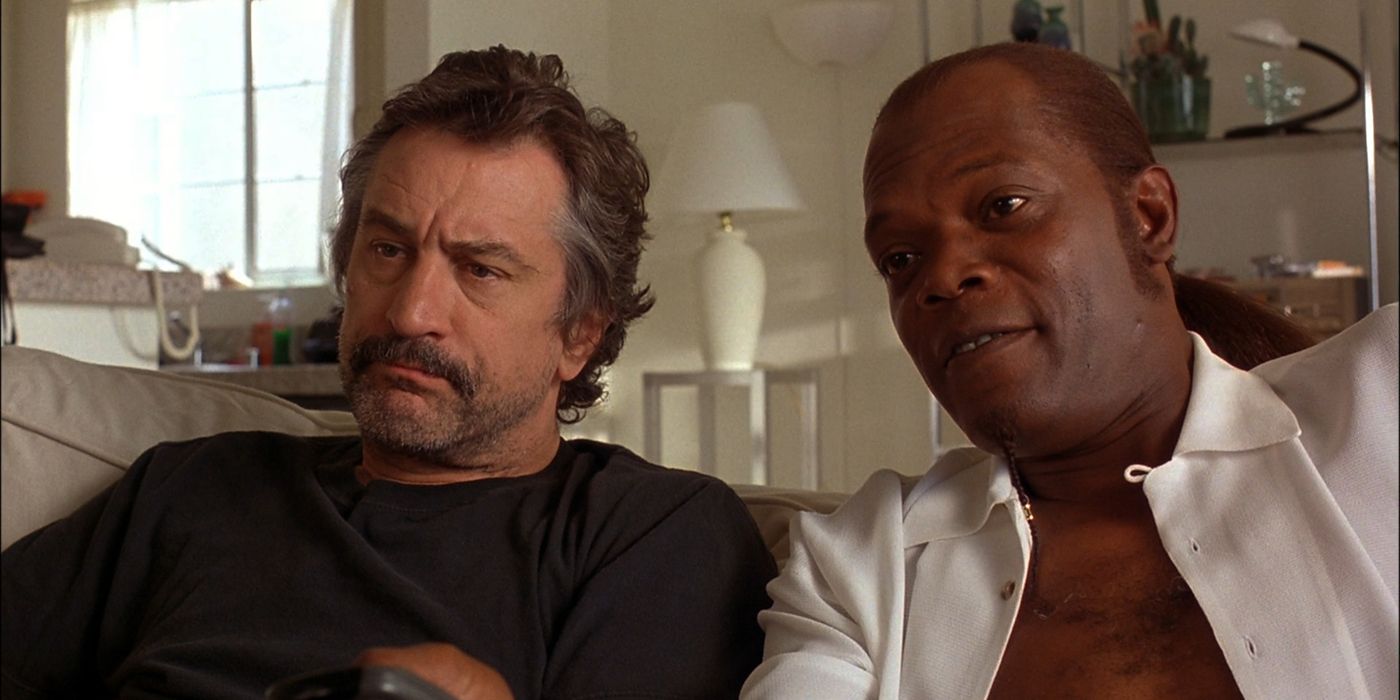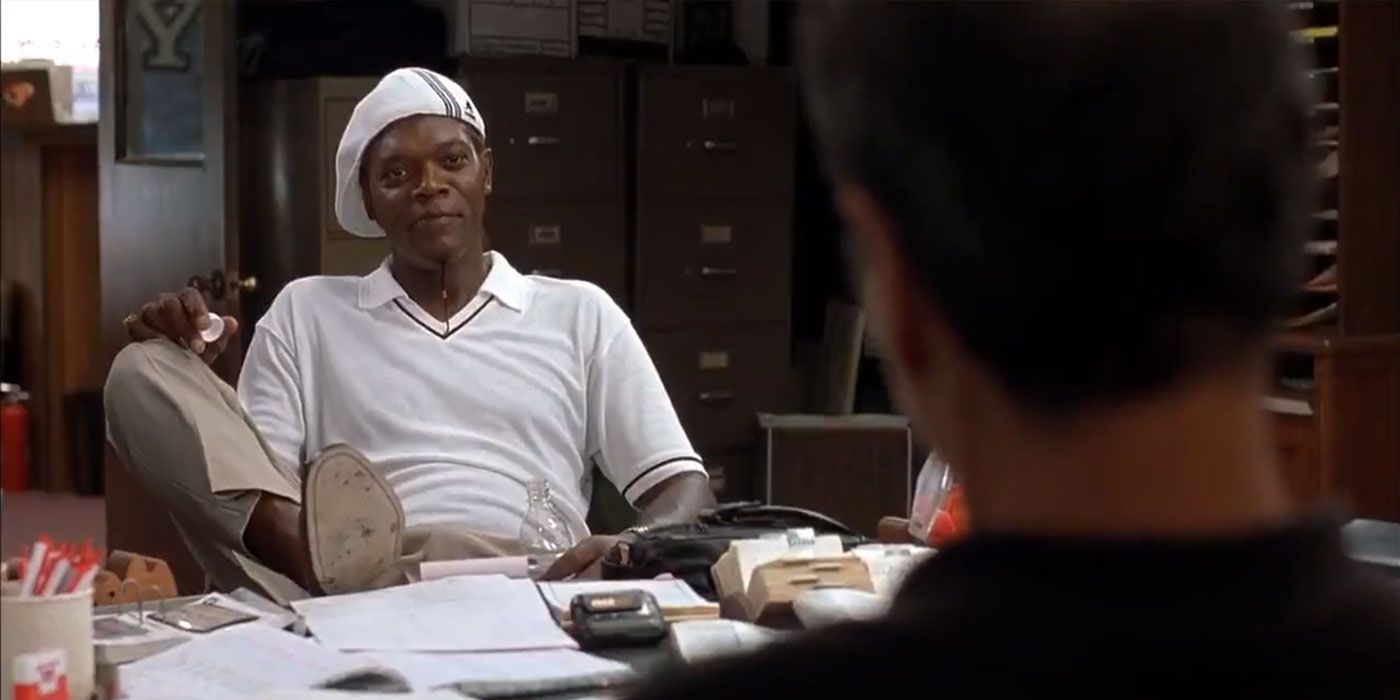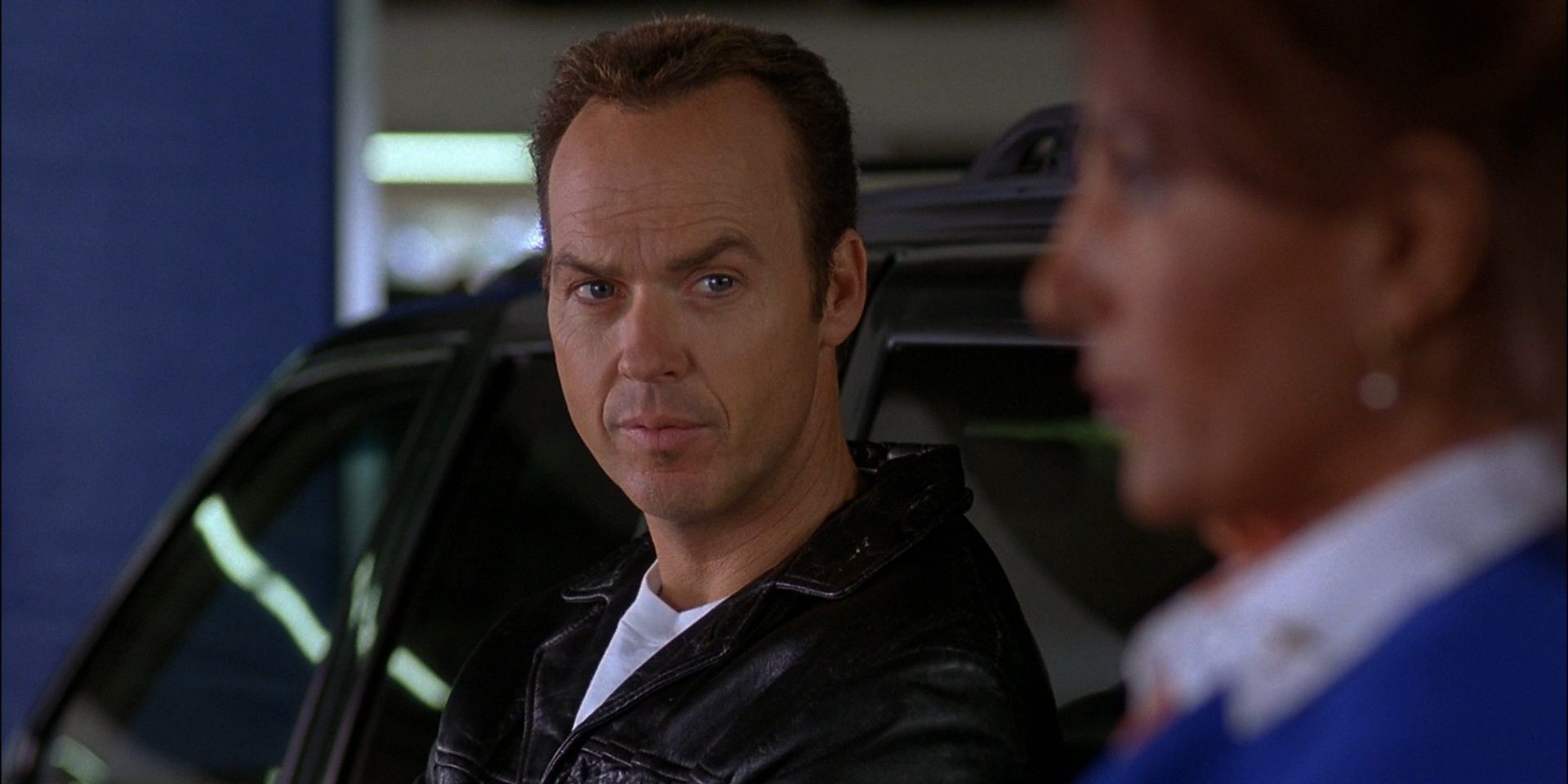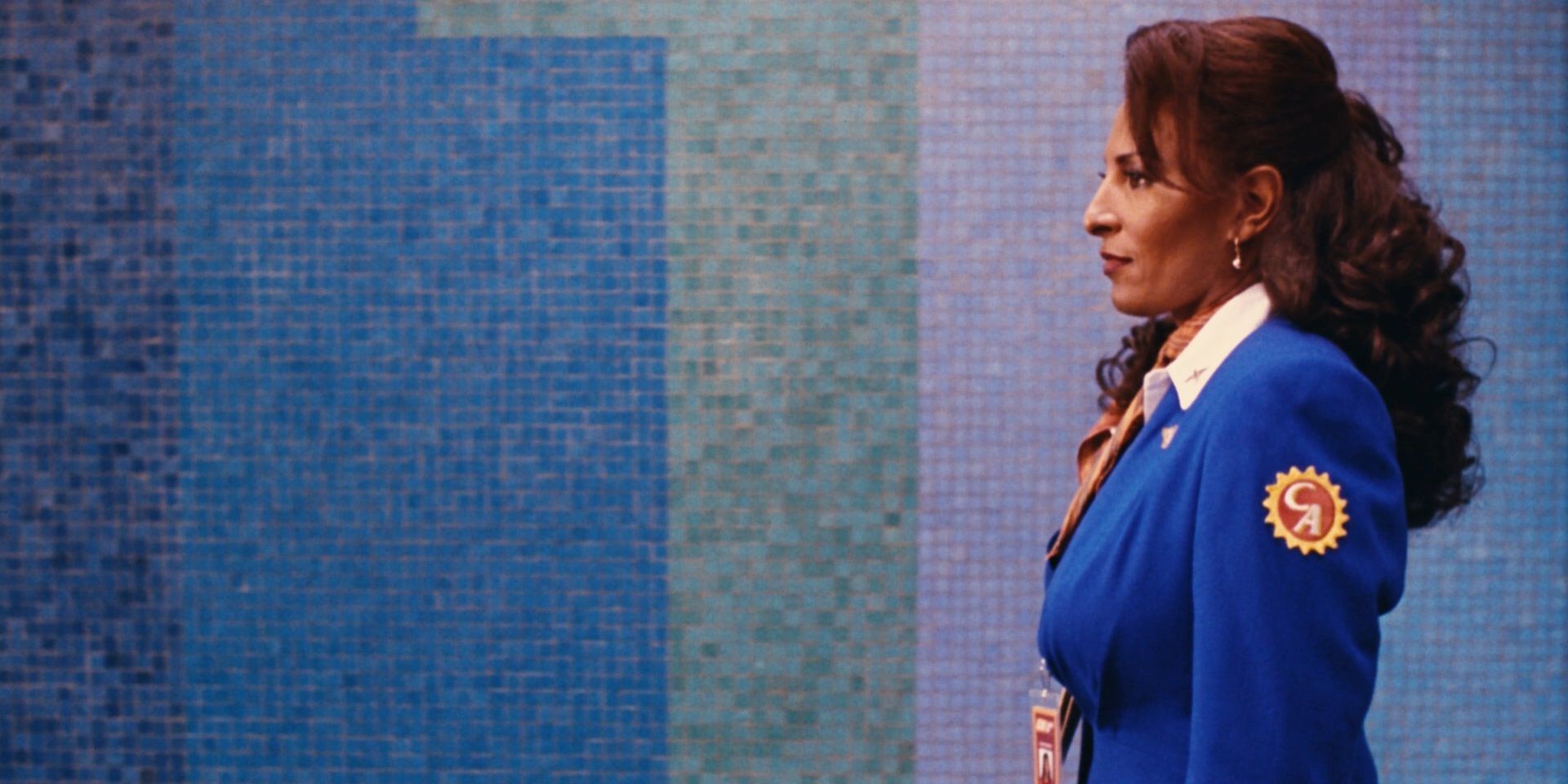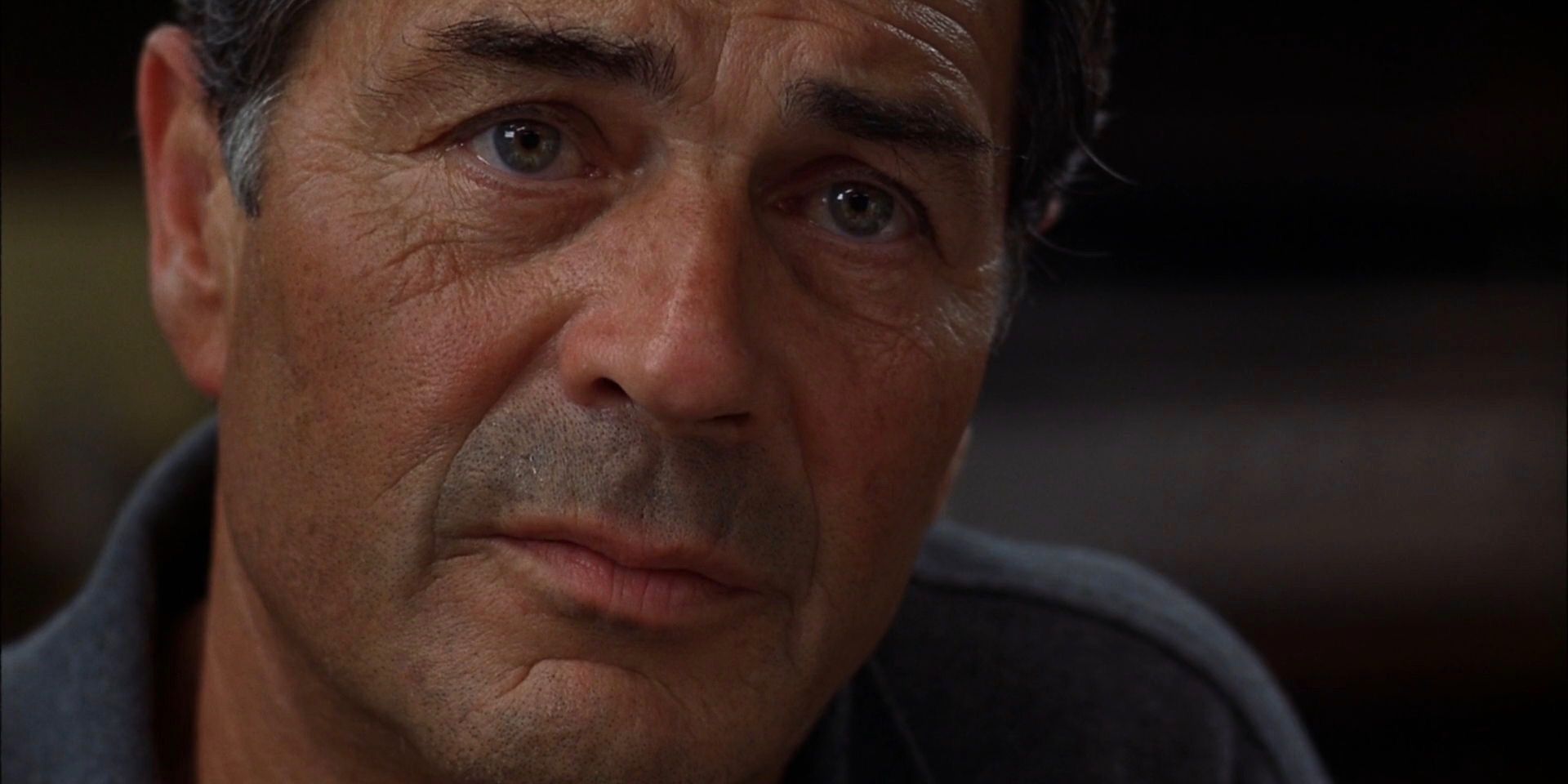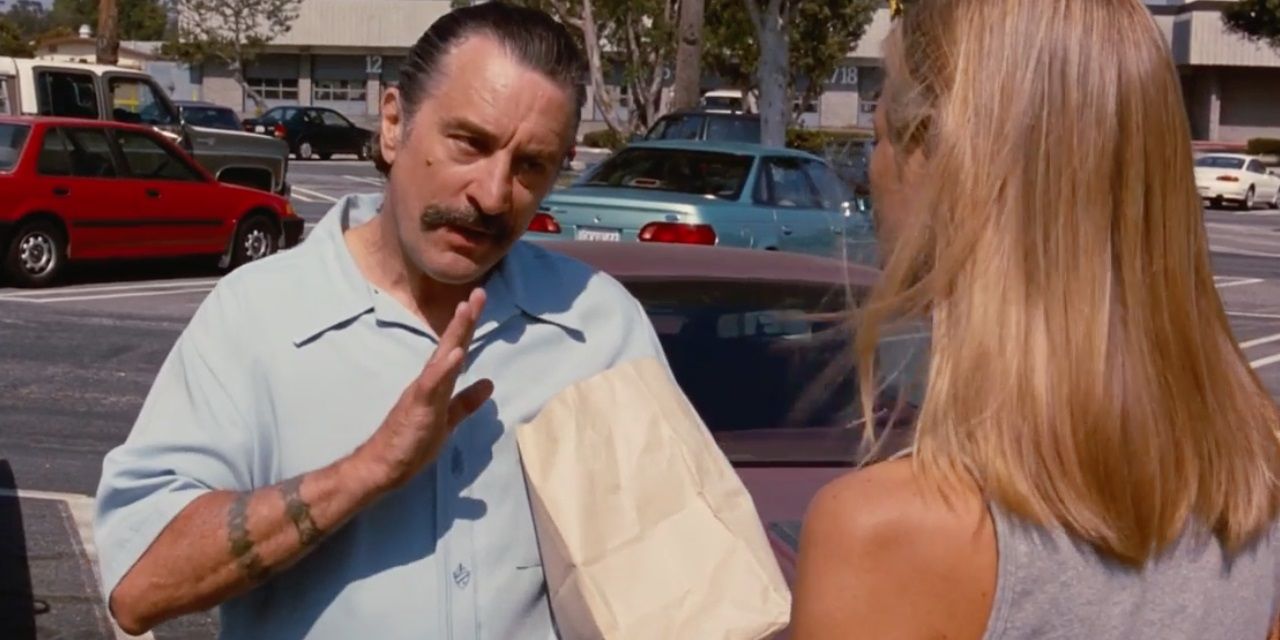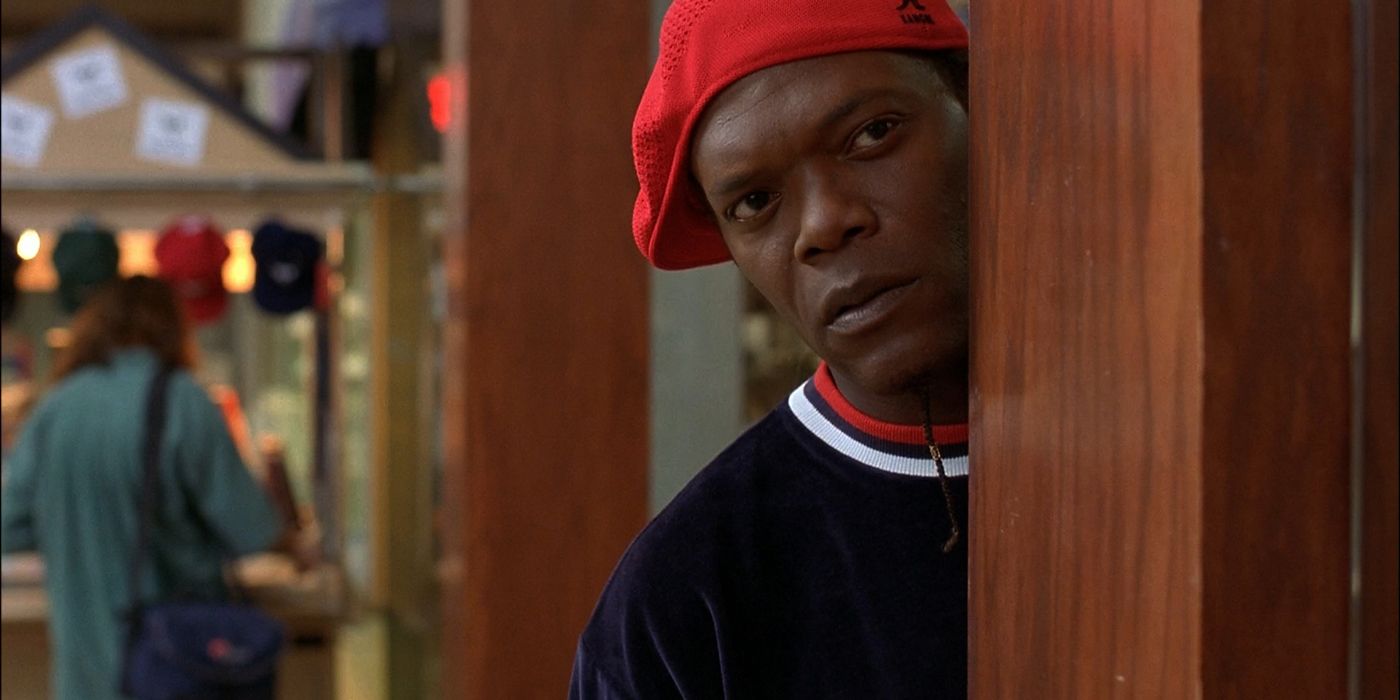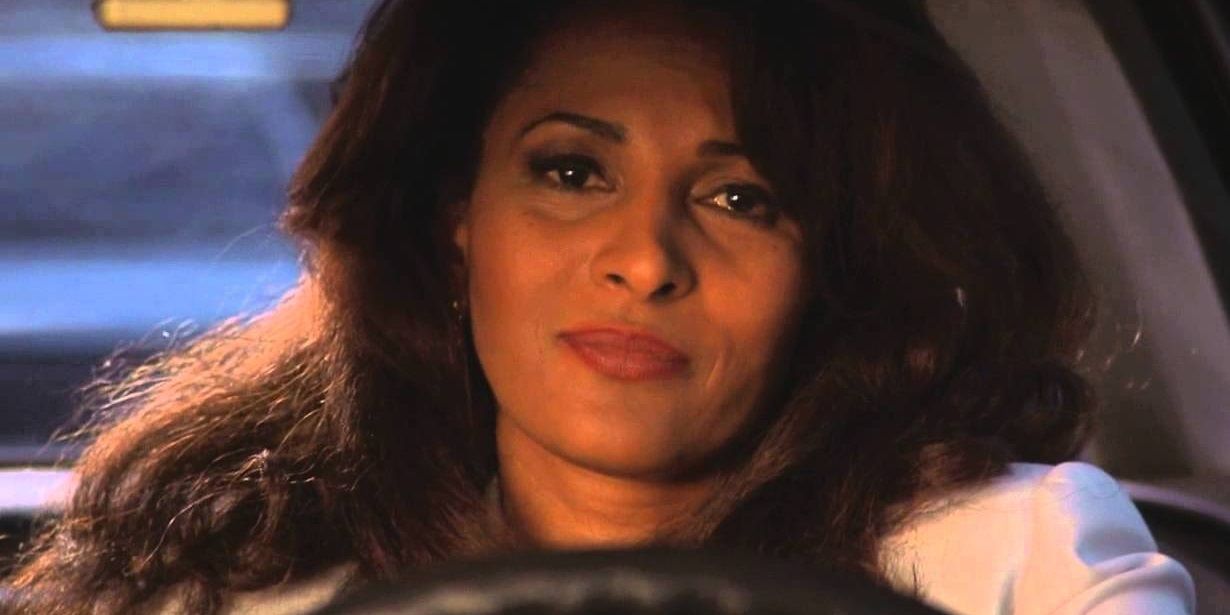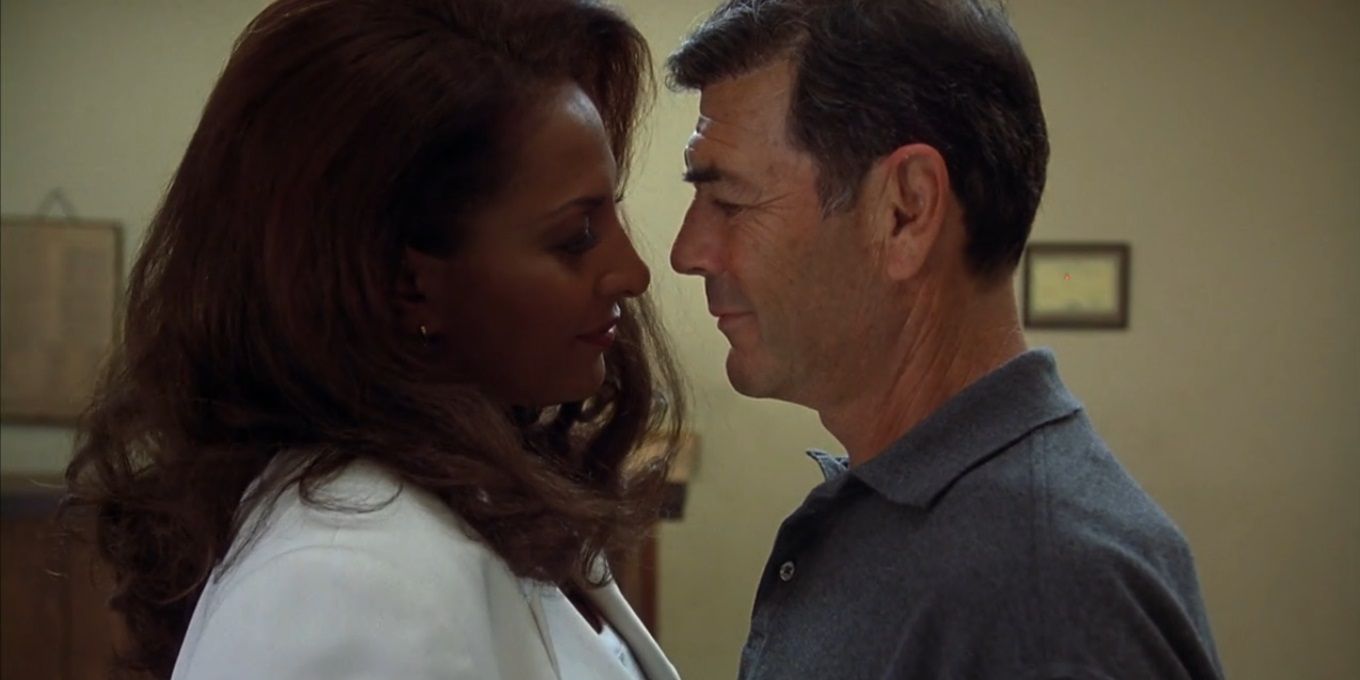After successfully following up his groundbreaking debut feature Reservoir Dogs with even more shocking violence, even more demented humor, and even bolder action in Pulp Fiction, Quentin Tarantino set an even higher bar for his third movie.
Rather than trying to go even darker and zanier than Pulp Fiction, Tarantino took a different approach to his next directorial effort. Jackie Brown is a more somber, cerebral, naturalistic counterpoint to his earlier genre-driven works. It wasn’t as big of a box office hit as Pulp Fiction, but it has proven to be just as timeless.
Pam Grier Gave Arguably The Finest Performance Of Her Career As Jackie
Pam Grier became the face of the blaxploitation genre with ‘70s classics like Coffy and Foxy Brown, but her star had significantly faded by the time Tarantino started working on his third movie. Starring in Jackie Brown gave Grier a much-deserved career comeback.
Exemplifying warmth and pathos that her badass vigilante roles in blaxploitation movies wouldn’t allow, Grier gave arguably the finest performance of her storied career as Jackie. Like all great acting, that performance is timeless.
Jackie Brown Is Tarantino’s Most Mature Film
Based on Elmore Leonard’s Rum Punch, Jackie Brown is the only Tarantino movie to be adapted from another writer’s work. Being beholden to existing source material gave Tarantino an uncharacteristic restraint that resulted in his most mature movie.
There are no flashy stylistic flourishes like spaghetti western crash zooms in Jackie Brown as Tarantino stays focused on the story and characters. It’s the most human, relatable entry in his filmography. Jackie Brown is often called Tarantino’s “hangout movie” because it captures an authentic slice of life.
It Exemplifies The Wit Of Tarantino’s Dialogue
As is usually the case with a Tarantino movie, one of Jackie Brown’s greatest strengths is its witty dialogue. Tarantino filled his script with recognizable conversations rendered sharper and snappier than real life. His writing basks in the poetry of everyday chit-chat.
As cool and quotable as the dialogue of movies like Reservoir Dogs and Kill Bill might be, it’s often too pulpy and stylized to ring true as human beings talking. As a counterpoint to this, Jackie Brown peppers Tarantino’s signature wit throughout bouts of believable chatter among real people.
The Supporting Cast Is Filled With Revered A-Listers
Grier is the undeniable star of Jackie Brown and she’s backed up with impeccable performances by Robert Forster and Samuel L. Jackson, but even the smallest roles in the supporting cast are filled by revered A-listers. After the cultural monument of Pulp Fiction, every actor in Hollywood would’ve jumped at the chance to work with its director on his next movie.
Tarantino seized the opportunity to fill Jackie Brown’s company of actors with recognizable faces. Robert De Niro downplays his performance as Louis Gara, Michael Keaton gives a likable turn as an ATF agent, and Chris Tucker makes a hilarious foil for Jackson as Beaumont Livingston.
It Has One Of Tarantino’s Greatest Soundtracks
In addition to his dialogue, one of the hallmarks of Tarantino’s filmmaking that his fans look forward to is his soundtracks. He fills his movies with needle-drop moments perfectly pairing awesome licensed hits with the action on-screen.
From the use of Bobby Womack’s blaxploitation theme “Across 110th Street” over the opening credits to Jackie and Max’s flirtatious discussion of the Delfonics’ “Didn’t I (Blow Your Mind This Time)” while it plays on Jackie’s record player, Jackie Brown has one of Q.T.’s greatest soundtracks.
Robert Forster Deservingly Earned A Career Comeback With His Lovable Portrayal Of Max
Grier wasn’t the only star whose career was deservingly revived by Jackie Brown. Robert Forster hadn’t played a leading role on the big screen in years when Tarantino cast him to play bail bondsman Max Cherry opposite Grier.
Forster brings a moral compass to this movie, providing a warm, wholesome presence in each of his scenes, and he was ultimately nominated for the Academy Award for Best Supporting Actor.
The Cross-Cutting Climax Is Captivating
The editing in Jackie Brown – cut together by long-time Tarantino collaborator Sally Menke – is razor-sharp, especially in the climactic sequence. Menke’s editing of the department store handoff uses split-screens and cross-cutting to show the different characters’ perspectives.
The audience can easily follow all the nuances of the operation as Louis and Melanie go into the store, Jackie secretly double-crosses them, and Ordell impulsively reacts with a handgun.
Samuel L. Jackson Gives A Subversively Understated Turn As Ordell
After Samuel L. Jackson became the breakout star of Tarantino’s previous movie Pulp Fiction, it was a no-brainer to give him a major role in Jackie Brown. As gun runner Ordell Robbie, Jackson gives a subversively understated performance.
He doesn’t try to top his Oscar-nominated turn as hitman Jules Winnfield. There’s no explosive anger or Biblical monologues or quips like “I’m a mushroom-cloud-layin’ motherf*cker, motherf*cker!” in Jackie Brown. The tone of this movie is different – it’s not about pulp archetypes; it’s about real people – and just as he nailed the exaggerated, hyper-stylized tone of Pulp Fiction, Jackson nails the more cerebral, naturalistic tone of Jackie Brown.
The Ending Is Beautifully Bittersweet
Tarantino always nails his movies’ endings – from the heartbreaking reveal at the end of Reservoir Dogs to the poetic justice in Inglourious Basterds to the explosion of Candyland in Django Unchained – and Jackie Brown is no exception.
Jackie successfully plays the cops and crooks against each other and makes off with the loot, ready to run away to an early retirement, but there’s a bittersweet element to this seemingly happy ending as Max reluctantly passes up the opportunity to join her. Grier captures a beautiful melancholy in Jackie’s eyes as she drives away in the final shot.
Jackie And Max Have A Tangible Romance
The love story between Jackie and Max gives the movie a real heart beyond Tarantino’s affectionate blaxploitation homages and signature dark humor. It’s not a tagged-on romantic subplot; if anything, Jackie and Max’s love takes center stage and becomes even more significant than the crime story.
Grier and Forster share unparalleled on-screen chemistry as a lonely older pair who unexpectedly find each other, fall in love, and ultimately can’t be together due to their circumstances.

